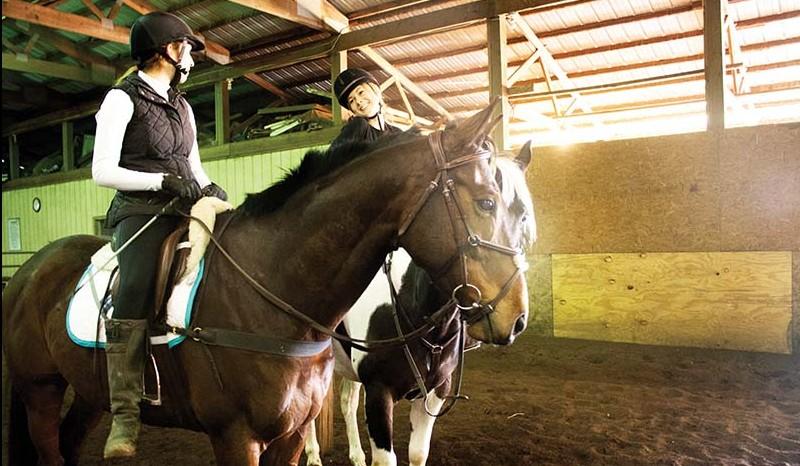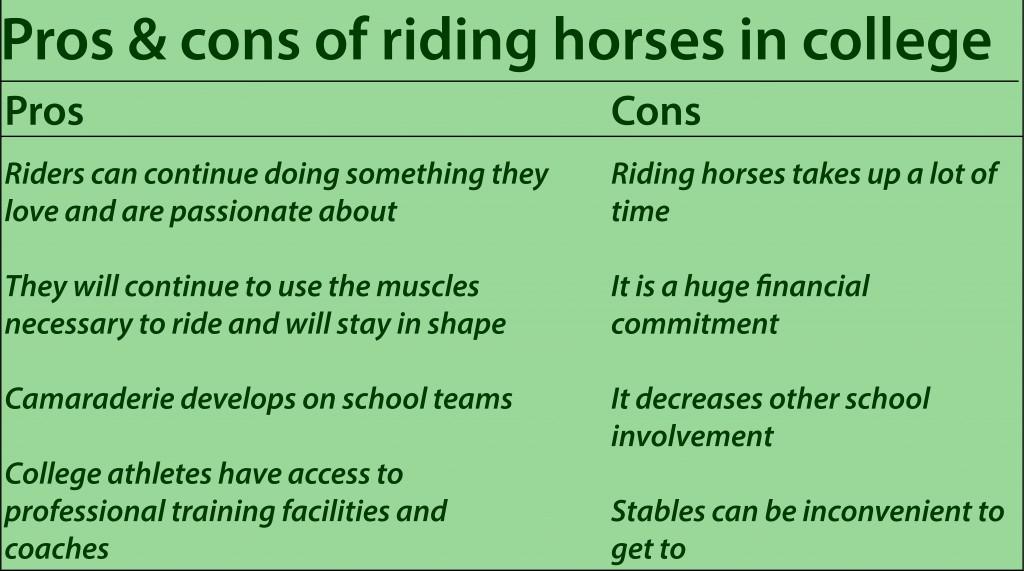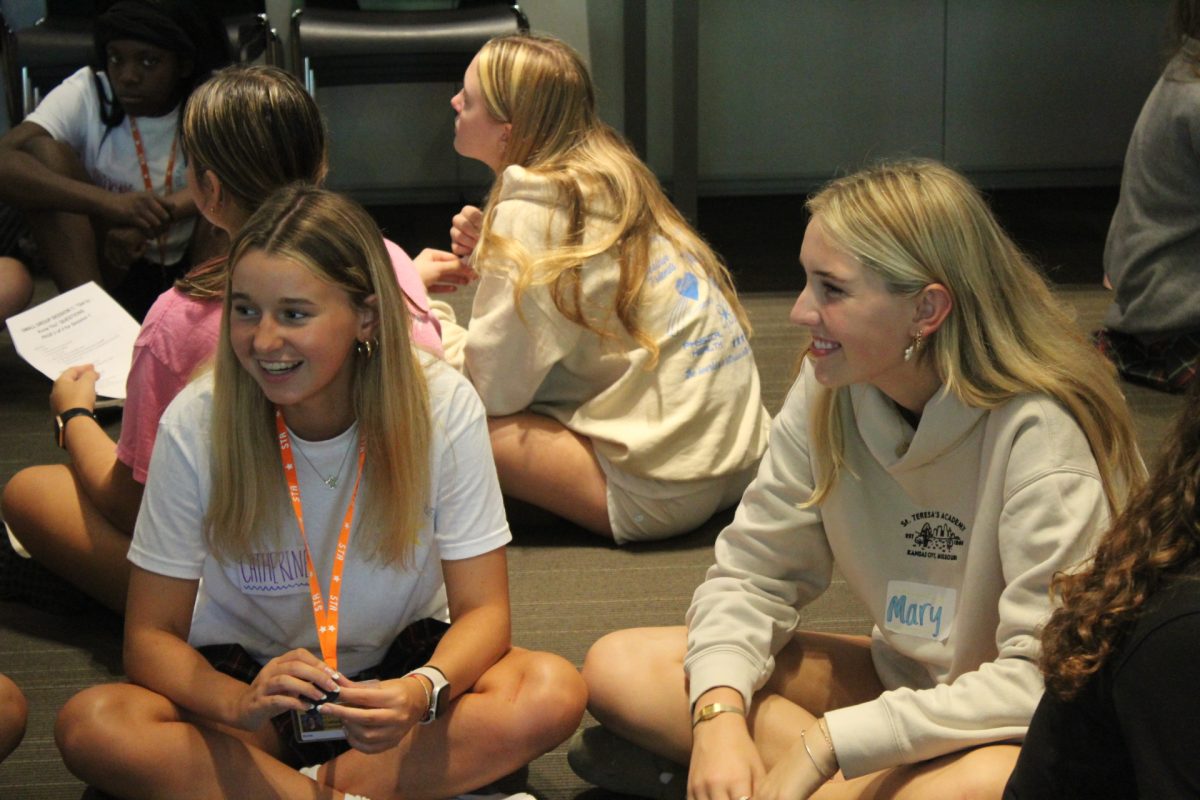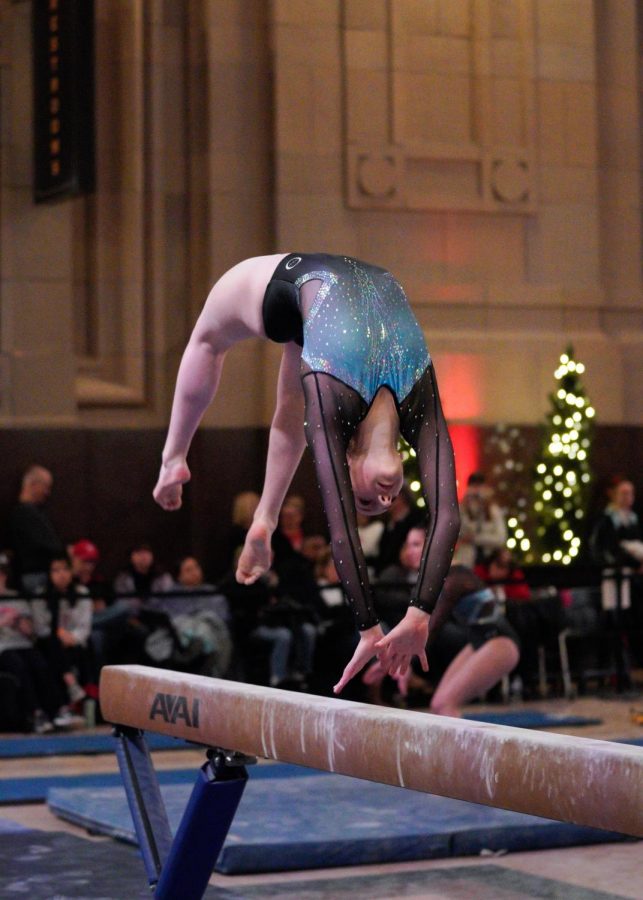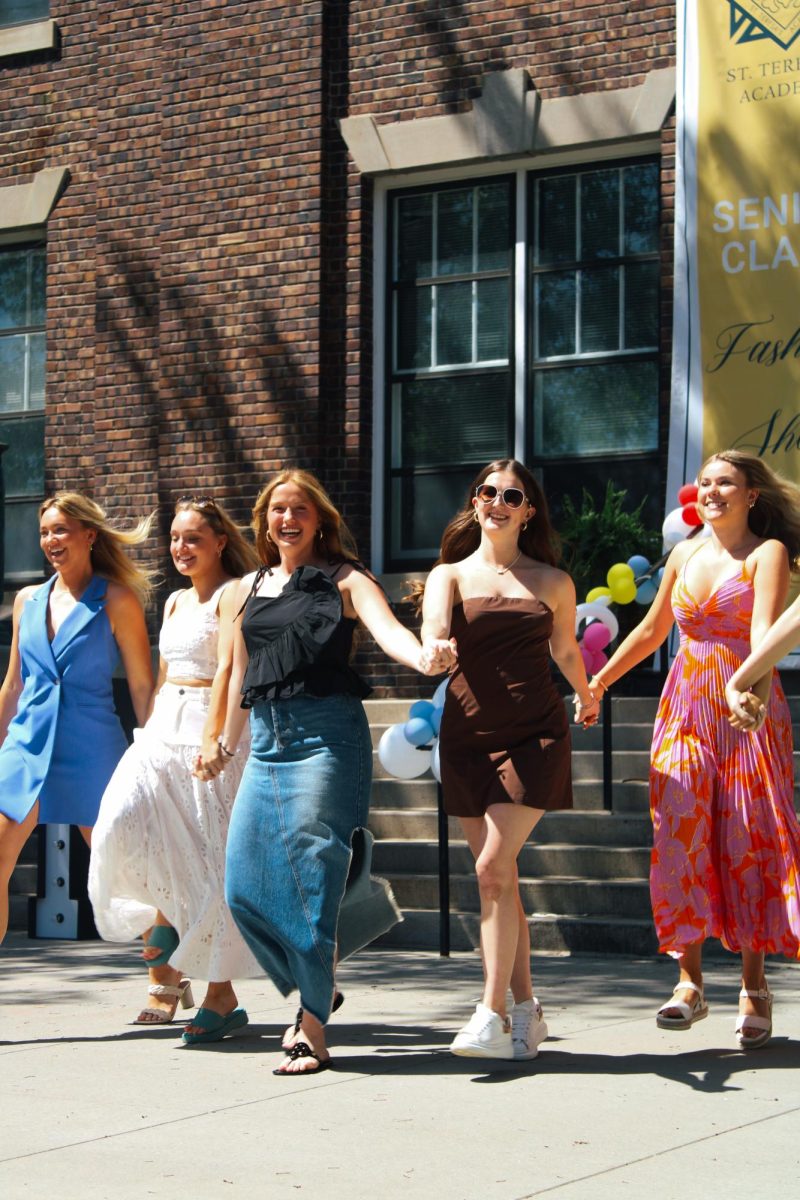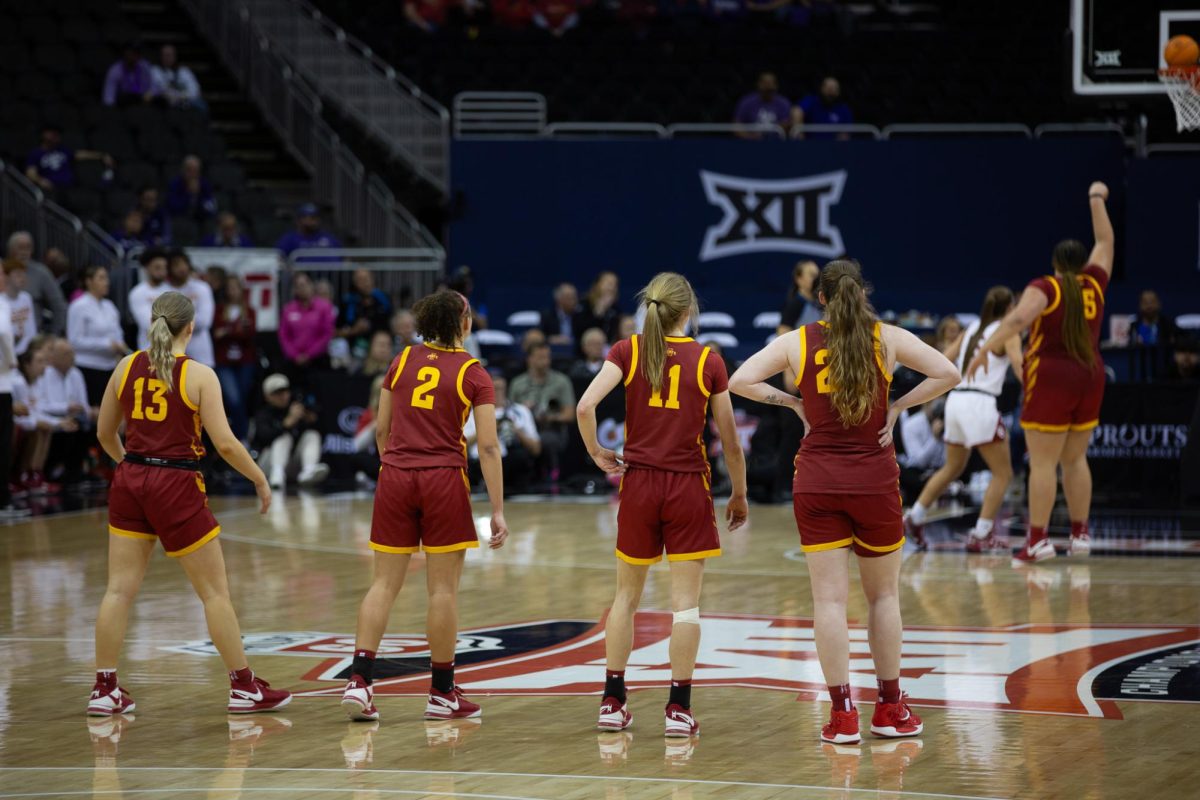story and graphics by Katie Parkinson, photos by Emma Wheatley
Like other current or former athletes, Manny, Rudy, Porscha, Dobbin, Ivan, Riot and Cowboy are no strangers to change. They train, work hard and compete. They don’t always win. They may be uncooperative with trainers, switch management and retire as old-age sets in.
Regardless, one inevitable transition each of these athletes will go through is the question of what will happen during college. While this new phase in life might affect some more than others, all are impacted. However, Manny, Rudy, Porscha, Dobbin, Ivan, Riot and Cowboy are not actually in charge of their own lives. Seniors Erica Wind, Kelly Love, Emma Stanfield and junior Frankie Neunuebel are.
With show names like Manhattan Whirlwind, Just Outrageous and First Lover, these horses face various futures depending on how their owners plan to ride in college – if they choose to at all.
Riding in college
Wind has been riding horses for nine years.
“I’m going to be bringing my horse, Riot, with me when I go to college,” Wind said. “I’ll just find a barn and pick a trainer.”
According to Wind, she is not too concerned with the time commitment given that she currently rides nearly every day except Tuesdays for three to five hours each day.
“It’s hard because right now school is seven straight hours, and then I go farther away [to ride,]” Wind said. “The barn I’ve found [for college] is about 20 minutes away from the school, and also you can ride different times during the day.”
Wind plans to train with her horse on her own time, as well as ride on a college team.
According to Wind, in a college competition, riders pull a name of a horse out of a hat to find out who they will be competing on. The unique part of this kind of competition is that riders are not allows to touch the reins until they actually begin showing. This type of event takes place in an arena, and riders have to go one circle as well as perform a jump course.
Although Wind will bring her horse with her, she does not plan on riding him in these competitions.
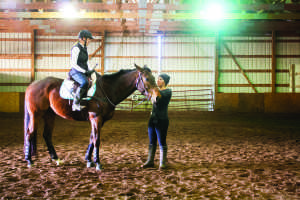
“You’re not allowed to use your own horse unless you’re willing to let other people use your horse,” Wind said. “[I wouldn’t do that] because my horse would probably hurt someone. He can be really stubborn and opinionated, but we have a really good relationship because I know his personality, and I know what point to push him to before he gets mad.”
Just like any other sport, there are some scholarships available for horseback riding in college. According to Love, in order to obtain one the application process begins the summer of a high school athlete’s junior year.
“You make videos of you riding, and you have to have three different horses,” Love said. “None of them can be your own, and you send them to prospective colleges. If they’re interested, they will come and watch you compete, and then they will contact you and have you out on an official visit.”
According to the Practical Horseman website, equestrian scholarships can vary anywhere from around $500 to full rides for schools who have a National Collegiate Athletic Association team. However, full rides are much rarer and are only offered to “blue-chip” recruits, or those who are being specifically scouted by a university.
Riding outside of college
Stanfield has been riding horses for 11 years.
“I don’t plan on riding competitively in college,” Stanfield said. “I’m going to a school four hours away, and I don’t want to come home every weekend, [but] I do plan on riding on the weekends that I come home. I just won’t be showing.”
At the moment, Stanfield rides three to five times a week for about half an hour to an hour each time.
“I ride lesson horses, [horses owned by a trainer,] during the week and work on different aspects of learning to connect with your horse and strength building,” Stanfield said. “Everything I learn during the week transfers over to my show horse on the weekends.”
According to Stanfield, another part of training is developing the right mindset. For example, knowing you won’t always win, and that it is hardly ever the horse’s fault as well as being able to recover from mistakes are important ideas to grasp.
“You get out as much as you put in,” Stanfield said. “Once you get to the show ring you can tell who put in the time and the effort and who didn’t.”
Currently, Stanfield owns two horses, a retired show horse named Rutabaga, or Rudy, and a gaited horse (bred for the ability to perform at a smooth, intermediate pace) named Just Outrageous, or Porscha. She is also trying to sell a show horse she outgrew named First Lover, or Dobbin.
Eventually Stanfield said she will no longer own her own horse, but will continue to ride lesson horses to stay in shape while she is in college.
According to Neunuebel, another option for equestrians who do not own their own horse is leasing one.
“Trainers do it different ways, but [one way to do it] is to lease a horse by show,” Neunuebel said. “You pay a fee to the owner, which really isn’t bad, and then you pay all the fees for the show. It’s a lot more of an affordable option, but what ended up happening with the horse I was leasing is the owner sold it out from under us, so it’s also not a very stable option.”
According to the Equisearch website, leasing a horse can cost around $150 to $650.
Taking a break
Love has been riding horses for 12 years.
“I’m probably not going to ride at all [in college] because I’m probably not going to have time,” Love said.
Although Love checked out a few colleges’ equestrian programs, she ultimately decided to take a break from horse riding during this time. In preparation for moving away from home and starting a new phase in her life, Love sold recently sold her horse, Ivan.
“[Riding horses] is a huge time commitment, as well as just being a college athlete in general,” Love said.
Usually Love rides three times a week for one or two hours at a time at a stable in Lone Jack, Mo. which is south of Kansas City.
According to Neunuebel, in addition to lengthy practices, riders often attend shows that usually run three to four days each.
“I really just wanted to have the normal college experience and not have to be an athlete,” Love said. “I want to rush, and I want to get involved in other things.”
Unsure but hopeful
Neunuebel has been riding horses for 12 years.
“I hope I get to ride in college,” Neunuebel said. “It really just depends on where I go. I’m not going to go to college on a riding scholarship. For example, there’s two colleges in Columbia, Mo. where people go and basically major in being a horse trainer, and that’s not really what I want to do. Riding horses is a really fun sport and a really fun hobby for me, but I don’t want to make it my life.”
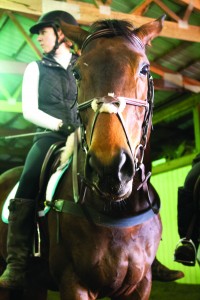
However, Neunuebel said if she does end up riding in college, she probably will not bring her horse with her.
“My horse is like the equivalent of a professional athlete,” Neunuebel said. “He’s on a really strict diet, and he’s on a training schedule and all of that, so I wouldn’t take him and stable him.”
According to Neunuebel, she will probably sell her current show horse, Manhattan Whirlwind, or Manny when she goes to college.
“He is really young, and riding, as much as it is a hobby, is a business, so honestly if I’m not riding and training him he would just decrease in value,” Neunuebel said. “Also, he loves his job, and he loves showing, so I wouldn’t want to take that away.”
Neunuebel said she will hopefully still be able to ride her old show horse, Cowboy, who is now retired.
According to Neunuebel, the upcoming show season, which lasts from late spring to November, will probably be her last one.
Although Neunuebel remains realistic about the cost, time commitment and complications of riding horses – especially in college – her ideal plan is to sell Manny and purchase a road pony.
“They’re basically like the Lamborghinis of the horse world,” Neunuebel said. “They are literally bred for speed, and they are so much fun. They’re tiny little rockets.”
Because road ponies are so small, there is a small division for people who can show them while riding them, according to Neunuebel. What most people do is hook a small, two-wheeled cart to the back of the pony and ride them that way.
“These carts are really flexible,” Neunuebel said. “These ponies get going around the ring, and the carts drift. It’s insane. It’s very intense, but it’s so much fun, and they get going really fast. My plan is to ride the pony and meanwhile get my dad hooked on driving it, so when I go to college he will keep the pony because he’s so addicted to driving it. I seriously doubt that’s going to work, but…”
[swfobj src=”https://www.dartnewsonline.com/wp-content/uploads/2013/04/riding-graphic1.swf”]
Looking to the future
Although Wind, Stanfield, Love and Neunuebel all have different plans on how they will handle riding horses in college, all four of them hope to pursue riding in the future after they are done with school.
Because horses are so expensive, riding after college is a much more feasible option, according to Stanfield.
“I plan on returning to the show ring after I graduate college, and when I can afford to,” Stanfield said.
Although Love said she would probably pick up horse riding again in the future, she joked that winning the lottery would help a lot with her return.
“What I’ve always said is, ‘If I have to take a break [from horse riding] in college, it’s okay because I’m going to marry a really rich guy, and he’s going to buy all my horses for me,’” Neunuebel joked. “But really, I’ll definitely ride out of college after I’ve settled down. Honestly, I love riding horses. It’s just such a good release for me, and it’s so much fun.”



